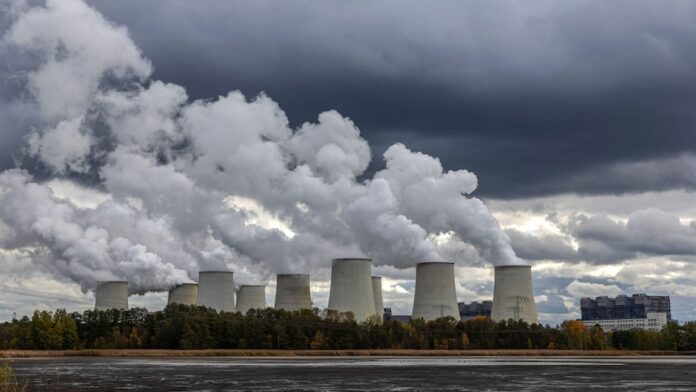Climate change is being named for the first time as the biggest source of systemic risk to India’s financial system. Photo: Bloomberg
Twice a year, the Reserve Bank of India assesses the stability of the country’s financial system. The latest report made headlines: the loan default rate is at a multi-year low and likely to fall further.
But buried in the report is a warning from the very institutions the central bank is supposed to regulate. Market participants responded to a survey asking what they saw as the biggest contributors to systemic risk. While they downplayed the usual concerns — asset quality, interest rate risk, capital outflows — one particular threat loomed larger than ever before: climate change. In fact, respondents named it for the first time as the biggest source of systemic risk to India’s financial system.
They are not worried. It is not just that India will see significantly lower growth if temperature increases are not controlled, according to the Network for Greening the Financial System. Its growth will also be more variable and subject to sharper shocks, including those from strange weather and delayed monsoons. This is a concern for the country’s financial veins; as is the uncertain fate of sectors such as construction, cement and energy, to which it is heavily exposed.
Indian regulators have been slow to respond. It was only earlier this year that the RBI finally published a draft framework that would require financial institutions to devise and disclose their strategies to mitigate climate-related risks. Even then, the timeline for adopting the new rules was unusually generous. For ordinary Indian banks, they will not fully come into effect until the financial year ending March 2028.
What explains the lethargy? Part of the problem is undoubtedly the bureaucratic inertia that plagues all policymaking in India. Regulators are afraid of stepping on each other’s toes, and on those of the government.
For example, no one knows for sure who will ultimately have the final say on what counts as a “green” investment. The securities regulator was the first to define a taxonomy and reporting framework for large listed companies. The Ministry of Finance in New Delhi would naturally prefer to see such a taxonomy determined centrally.
An interdepartmental task force, with various supervisors and ministries represented, is said to be working on definitions. But it was set up in 2021 and nothing has been decided yet.
At the same time, regulators may be too focused on reinventing the wheel. India’s markets are large enough, and its problems urgent enough, that policymakers here generally feel they have little to learn from attempts elsewhere to solve the same challenges.
This is short-sighted, especially when it comes to financial regulation. Whether it’s a taxonomy, disclosure requirements or climate stress tests, transparent criteria that align with those used elsewhere are useful — at least if you want global investors to understand and trust your standards.
Regulators may be more motivated to implement disclosures and restrictions – such as designating specific loans as risky in the green transition – if they believe such transparency would attract greater investment.
Unfortunately, Indian policymakers no longer fully believe in promises that a greener financial system will give the country access to pools of sustainable finance globally. India launched a green sovereign bond in 2023. It did not sell at a large premium and was mainly taken up by domestic investors; interest from foreigners seemed low. The RBI cancelled the sale of a second tranche that had been planned for this year.
Finally, and perhaps most importantly, there may be an unspoken fear of what a more rigorous examination of climate risks might reveal.
The RBI published the results of a preliminary set of climate stress tests in 2023, which found India’s vast network of state-owned banks particularly vulnerable.
While it’s not entirely clear why — more detailed tests have been promised but not yet done — the fact is that many Indian banks have lent heavily to the power sector in the past. Data from last year showed that banks, even in the public sector, are now reluctant to finance new coal-fired power plants, suggesting they worry about being overexposed to the sector. (Renewables haven’t had the same problems.)
Five years ago, Indian regulators may not have been aware that climate change posed macroeconomic risks. They no longer have that excuse. The report that identified climate change as a major concern also detailed how other central banks and regulators are responding. The roadmap is there — India just needs to pick up the pace.
Disclaimer: This is a Bloomberg Opinion article and these are the personal views of the writer. They do not reflect the views of www.business-standard.com or the Business Standard newspaper.
First print: 05 Jul 2024 | 07:51 am IST


